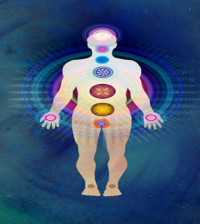- 5 Tips To Finding Peace Within Yourself
- The Do’s and Don’ts of Learning How to Accept Yourself
- How to Find Your Inner Peace and Transform Your Life
- 8 Benefits of Having an Open Mind and How to Get One
- Learn How To Be A Happier Person
- What Is The Meaning Of Life?
- Laws of Abundance – The Riches of Love and Joy
- How to Be Laid Back By Following These 9 Simple Strategies
- The meaning of confucius’ golden rule – 4 practical ways of living it
- 3 methods of unleashing the power of contentment in your life
Top 3 Pain Management Methods

Pain is not all bad—it acts as an irresistible signal that your body is sustaining damage, whether external or internal. In the right context, pain works as a warning signal so that you may avoid sustaining further damage—such as when you accidentally touch a hot stove. On the opposite extreme end are people who, due to some disorder, do not feel pain: they can literally walk on a bed of flames and smell their burning flesh and not feel anything at all. Despite these vital roles of pain, however, is the fact that it can become a major, even long-term, problem: chronic pain can make life truly unbearable, especially if you could not pin-point its source. Common examples are hip replacement surgery patients whose doctors could not accurately identify why they feel pain whenever they walk or whenever they are exposed to a certain temperature. Moreover, famously, Dr. Gregory House of the TV series ‘House’ also suffers from somewhat incurable chronic pain due to some radical surgery.
In everyday life, however, there are countless others who suffer quietly from the almost constant presence of pain in their lives. But how does pain shift from being the vital tool for our own survival into something that severely degrades the quality of life?
Understanding pain
Chronic pain occurs in modern life due to what we might refer to as a “vicious circle.” If you are unhealthy (infection, illness, or some disorder), your health problems cause significant stress on your system. This stress, in turn, causes muscle tension. And because we’re not normally very aware of our own muscle tension, it soon develops into enhanced pain. Have this soup of pain simmering for a long time, and you’ve got some serious pain situation on your hands.
Fortunately, you don’t really have to suffer so much—the following are just some of the most common, yet effective, pain management methods.
1. Exercise
Exercise has so many health benefits that you’re probably already aware of, but we’d admit this won’t be appropriate for all types of people going through some pain. If possible, consult with your doctor regarding what type of exercise may be best for you. Regular exercise enables your body to release what we call “pleasure-inducing” chemicals, and it is one major way of countering the effects of pain (you produce pleasure, you lessen pain). Not only that, but exercise also strengthens your heart and enhances your body’s blood circulation and generally gives you a better disposition and mood, so what’s there not to like about it?
2. Warm Water Therapy
Exposure to warm water (we emphasize “comfortably warm” water and not the kind that scalds) can also significantly decrease muscle stiffness and pain. In most cases, the relief can be felt instantly—the moment you immerse yourself in a tub of warm water, as if the pain slithers away. In fact, this has been one of the foremost pain management methods since ancient times—that’s why warm springs are highly valued wherever they arise. Warm water therapy is especially good for painful joints, mainly because when you’re floating, gravity eases off those joins, allowing these joints to rest. In any case,
3. Meditation
Of all the known non-surgical pain management methods, meditation is perhaps the most potent because it goes to the root cause of all pain: the mind, or the brain. Several studies have shown how meditation can actually increase the brain’s neuroplasticity—the brain actually becomes more efficient, like a well-exercised muscle. But more importantly, especially in the context of managing pain, regular medication increases the body’s levels of endorphins, DHEA, GABA and melatonin—neurochemicals responsible for improving our sense of well-being, relaxation, and deep rest.








































You must be logged in to post a comment Login